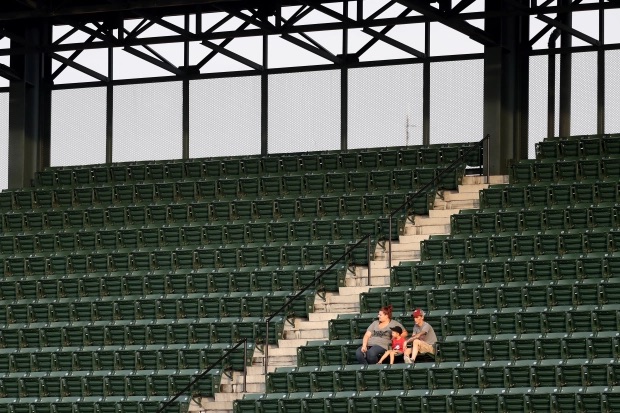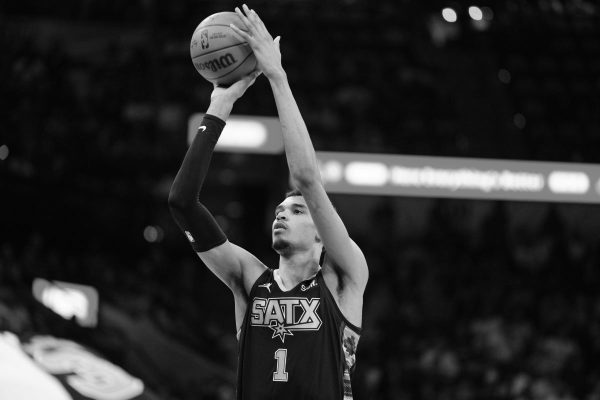The MLB: Big Changes Necessary for Game to Stay Alive
A lone family sits in the otherwise empty stadium stands.
The story has been circulating in the sports world recently that baseball is dying. The people saying that are not wrong — baseball has become much more difficult to watch in recent years due to changes in how the game is played. Baseball in the modern era is driven by analytics, which emphasizes the “three true outcomes:” a walk, a strikeout, or a home run. This leads to players focusing less on putting the ball in play and focusing more on all-or-nothing swings, knowing that striking out in today’s game is not as frowned upon as it once was.
Even Miami Marlins manager Don Mattingly called the game unwatchable because it seems as if nothing happens. It’s one thing to not have the casual fan intrigued by baseball, but it’s a completely different thing when someone who’s been involved in MLB since 1982 disapproves of where the game is headed.
One of the main issues with the sport is the game time has increased. In 2001, the average game time was 2 hours and 54 minutes, but as of last year, that average has reached 3 hours and 11 minutes. Personally, I don’t mind the increase in game time, as I genuinely enjoy watching the game, but this makes it much harder to appeal to the average sports fan with a diminishing attention span.
MLB commissioner Rob Manfred has begun to take some measures to try to reduce these times back to under three hours by speeding up the pace of play. This includes setting up a pitch clock, similar to a shot clock in basketball, which limits the amount of time you have to pitch to a matter of seconds.
College third-year and football player Drew Bernard believes these rules will put a dent in the issues, but much more work needs to be done.
“Watching numerous mound visits and repeated pickoff throws to first base is not very appealing to the average fan,” he said. “I think the pitch clock is going to help in some aspects, but I think this is a tough challenge for baseball to overcome because it doesn’t have the level of action seen in a NBA, NFL, or even NHL game.”
Sure, these rules are a small start to capturing the eye of the casual fan, but there are some much bigger issues at the core of the MLB that could use an overhaul. One of these issues is the long season, as the regular season lasts 162 games from April to September.
Bernard suggested cutting down the season in order to increase the fan engagement of individual games.
“It’s hard for fans to keep up with 162 games a year, and fans don’t feel super invested in games early on in the season,” he said.
Another key issue that the MLB needs to fix if they want to make a jump in popularity is the marketing of its star players. For example, Mike Trout has been unanimously known as the best player in baseball for the last 10 years and is considered to be one of the greatest players of all time. However, Trout only scored a 22 on the Q Score test in 2018, which means that he’s known by a little less than 20 percent of American families. This is the same score as the middle-of-the-pack NBA forward Kenneth Faried. Although Trout may not be the most marketable player, since he likes to keep his life outside of the public eye, there are some very marketable young players like Fernando Tatís Jr., Ronald Acuña Jr., and Juan Soto.
If the MLB can embrace celebratory antics like excessive bat flips, they can do a much better job appealing to the younger and more casual fans. Fans don’t want to see the old-fashioned guy that hits singles, takes walks, and keeps his head down. They want see this new crop of players that hits bombs and lets everybody in the stadium know they’re the best player on the field. These kinds of antics have historically been frowned upon in the MLB due to the “unwritten rules” of baseball and the etiquette every player is supposed to follow. Those rules need to be thrown out if we don’t want baseball to be a thing of the past.




